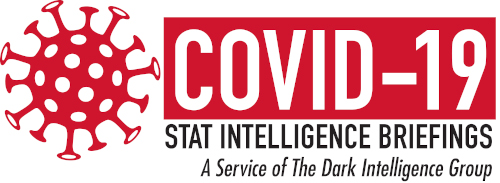COVID-19 related research creates new technological advances that could have a lasting impact on medical science
Interesting research that may have an impact beyond just the COVID-19 pandemic uses decoys that may neutralize the SARS-CoV-2 virus. This strategy uses molecules that tightly and irreversibly bind to the sites of the virus that would normally bind to cells while infecting them. By tricking the virus into binding onto molecules that are similar to cell binding sites, the virus can effectively be prohibited from binding onto cells and causing infection.
Research into this possibility began in the late summer of 2020 but continues today. Use of this technology could be preventive, administered to people before they have an infection and to keep the virus from starting to enter cells and causing an infection. Even though COVID-19 vaccines are now available and are the best choice for preventing infection, the ongoing research in this area could still reduce infections of COVID-19 and lead to advances in preventing other diseases.
Potential to Block Viral Infection
This technology could also be used to lessen the severity of infections by reducing the active viral load early in infections. “This approach could be used as an early intervention to reduce the infection among people who have tested positive, but aren’t yet suffering symptoms. But we also see this as part of a larger antiviral strategy,” said Robert Linhardt, PhD, Professor of Chemistry and Chemical Biology at Rensselaer Polytechnic Institute. “There are many ways to combat a virus, and as we’ve seen with HIV, with the right combination of therapies, we can control the disease.”
Linhardt’s research found that the blood thinner heparin binds to SARS-CoV-2 spike proteins at 73 picomoles, a measure of the interaction between the two molecules. “That’s exceptional, extremely tight binding,” said Jonathan Dordick, PhD, a chemical and biological engineering professor at Rensselaer who is collaborating with Linhardt to develop the decoy strategy. “It’s hundreds of thousands of times tighter than a typical antibody antigen. Once it binds, it’s not going to come off.”
Linhardt’s research has also included other molecules that show similar promise. One molecule, an extract from edible seaweed, showed a substantially higher level of effectiveness than remdesivir, an antiviral used to combat COVID-19, or than heparin.
SARS-CoV-2 Virus Research Offers Larger Benefits
While this research has shown significant promise in treating or preventing COVID-19, it also has potential applications to many other viral infections. “This isn’t the only virus that we’re going to confront in a pandemic,” Dordick explained. “We don’t really have great antivirals, but this is a pathway forward. We need to be in a position where we understand how things like heparin and related compounds can block virus entry.”
“What interests us is a new way of getting at infection,” Robert Linhardt expanded. “The current thinking is that the COVID-19 infection starts in the nose, and either of these substances could be the basis for a nasal spray. If you could simply treat the infection early, or even treat before you have the infection, you would have a way of blocking it before it enters the body.”
“It’s a very complicated mechanism that we quite frankly don’t know all the details about, but we’re getting more information,” said Dordick. “One thing that’s become clear with this study is that the larger the molecule, the better the fit. The more successful compounds are the larger sulfated polysaccharides that offer a greater number of sites on the molecules to trap the virus.”
While this research was first started last year, it continues to be developed. A paper published in early March of 2021 presented research that showed that heparin not only binds to SARS-CoV-2 but also changes its receptors upon binding.
Advances in this area of research have implications for many viruses beyond SARS-CoV-2. As this technology becomes better understood, it seems possible that it may one day be used to treat influenza, other existing coronaviruses, or even, potentially, viruses that have yet to emerge.
While the COVID-19 pandemic has caused some devastating effects on public health, it has also led to several innovations that may contribute to medical science in the years to come. Clinical laboratories will benefit from keeping current with the emerging technological advances that rise out of the pandemic response.

—By Caleb Williams, Editor, STAT Intelligence Briefings
Related Resources:
Rensselaer Polytechnic Institute: Common FDA-Approved Drug May Effectively Neutralize Virus That Causes COVID-19
Rensselaer Polytechnic Institute: In Cell Studies, Seaweed Extract Outperforms Remdesivir in Blocking COVID-19 Virus






